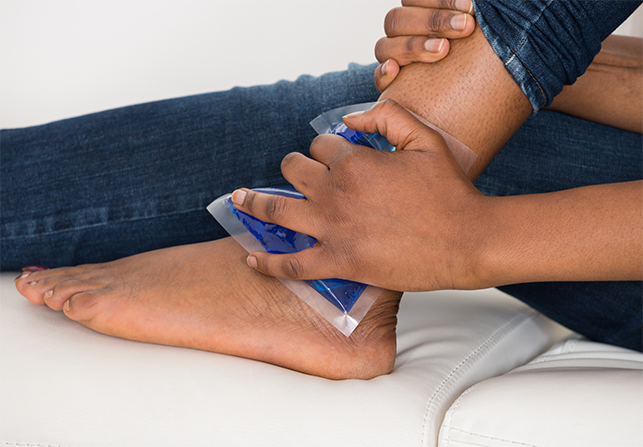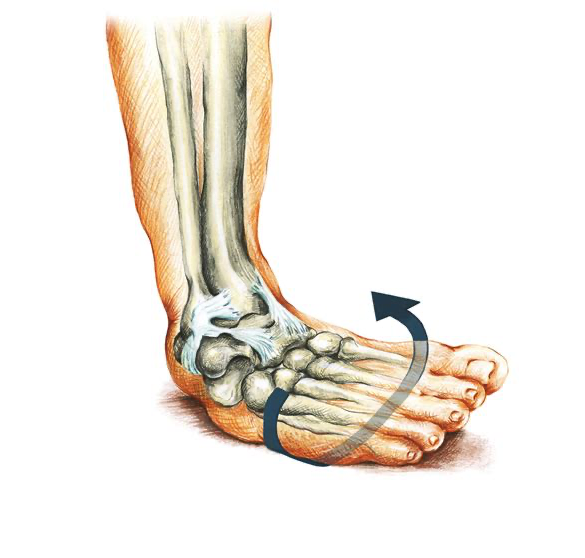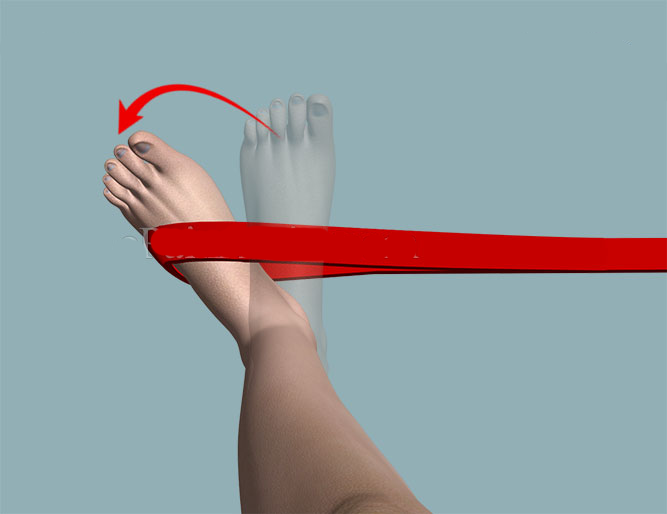Sprained Ankles
Nothing ruins a summer like a sprained ankle. If you should find yourself in this unfortunate position, you should be aware of what you can do on your own to heal the quickest and with the least complications afterwards. First let’s discuss what happens when you roll your ankle.
This is one of the most common injuries for athletes, but can also occur with a random misstep of the foot. Strong ligaments connect bone to bone and surround your ankles to keep them in good alignment and stabilize the joint. When the foot rolls under it stretches these ligaments beyond their limits resulting in minor to full blown tears in the fibers of this tissue. This usually happens on the outside of the ankle as the foot rolls in and under towards your midline. After an ankle has been strained, it can often lose it’s proprioception (knowing where it is in space). When it loses this sense, the muscles don’t fire correctly when on uneven ground and can roll more easily. Strength and stability exercises are crucial to prevent this from happening. I will list a few at the end to get you started.
There are three classifications for sprains
Grade 1 Sprain (Mild)
Overstretched and microscopic tears in the lateral ligament fibers
Mild tenderness and swelling around the ankle
Hurts, but able to walk on it
Grade 2 Sprain (Moderate)
Partial tearing of one or more of the ligaments
Moderate tenderness and swelling around the ankle
Can walk, but with a slight limp
Grade 3 Sprain (Severe)
Complete tear of the ligament
Significant tenderness and swelling around the ankle
Cannot bear weight or walk
Sprains can be treated at home, but you should see a doctor if the swelling seems extreme or you’re having trouble putting weight on it. Here are some things you can do to help heal the best on your own.
R.I.C.E. (Rest, Ice, Compress, Elevate)
Rest: Get off your feet! While this seems intuitive and like a no brainer, some people dismiss the soreness and try to walk it off. This will not be helpful and might contribute to a more severe injury.
Ice: Your ankle will be swollen. Get some ice on there immediately. You can do this 2-4x a day for 15-20 minutes. It’s important to control the swelling so that the ligaments heal in a neutral position. If they heal in an overstretched state, they will lose the ability to properly stabilize your ankle.
Compress: Using an ace bandage or brace will better keep the bones in alignment to help prevent further damage and to allow the ligaments to heal without being overstretched in the process.
Elevate: Keeping your ankle elevated above your heart. This will help the swelling by pulling blood away from the injury.
Depending on the severity of the sprain, recovery can take 1-2 weeks or even 6-8 weeks.
Here are some exercises to begin once the swelling goes down.
Range of motion exercises are the easiest start with. The joint need to experience the freedom of movement in order to retain it.
Imagine your big toe has a long paintbrush at the end of it. Use that to air-paint all the letters of the alphabet a few times through.
Stability
Practice balancing on the injured foot. Use the wall or a chair to hold onto if you need extra support. Start on the floor alone and place a pillow or rolled up towel underneath your foot once that feels easy.
Ankle Eversion Strengthening Exercise
Place a resistance band around the middle of your foot and pull out and under to create eversion.
Do 10 3x




